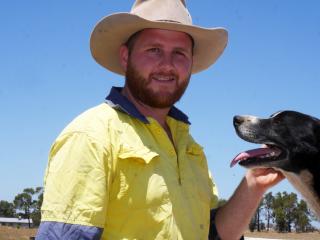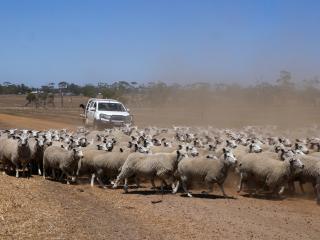Labour saving tools to make sheep work easier
One of the exciting initiatives within SIBI’s new on-farm technology activity is case studies into key labour-saving tools to make running sheep easier. The specific tools have been identified by the new on-farm technology pilot group as having a positive impact on labour efficiency and the operator’s time management and wellbeing.
The outcomes of the case studies will include a YouTube video, an economic benefit – cost analysis, a feature article and a downloadable audio podcast featuring an interview with the farmer who has successfully integrated the tool into their sheep management. To date, the video on remote monitoring featuring Chris Patmore in Eneabba has been viewed over 800 times. Some grower groups have invited Chris to speak at their forums as a result of the video and Chris additionally attended the Bewety and the Feast open day in Katanning to further his involvement in the SIBI project.
The most recent case studies to go live include using laneways to increase labour efficiency and an automated jetting race for flystrike prevention.
Andrew Slade, who is a member of the new on-farm technology pilot group as well as the Stirlings to Coast grower group, runs a farm with his wife Nicole, parents David and Lyn, sister Vanessa and brother-in-law Scott. The Slade family began constructing a 40 km laneway system through their farm 20 years. As a result of the investment, they halved the amount of time taken moving, feeding and checking sheep, plus moving equipment around. This has saved them over 1300 hours per year, or more than half a labour unit. The payback period for their investment into the laneways is around 7 years.
Another labour saving tool the Slade family have invested in is the use of an automated jetting race for flystrike prevention. Previously, when jetting by hand they would have to jet their sheep a minimum of two to three times per year to prevent browfly strike. With the use of the automated jetting race, they have halved their chemical and labour used. Consequently the payback period for their investment is around 2 years.
More information on the laneways and automated jetting race case studies can be found on the New on-farm technology activity webpage.
Filming is currently underway for case studies on sheep handlers and the use of Pedigree Matchmaker for determining dam pedigree. Future case studies will involve electronic identification (EID), on-farm connectivity (WIFI) and other labour-saving tools.
For more information on the new on-farm technology activity, contact John Paul Collins on john.collins@agric.wa.gov.au or +61 8 9821 3249


